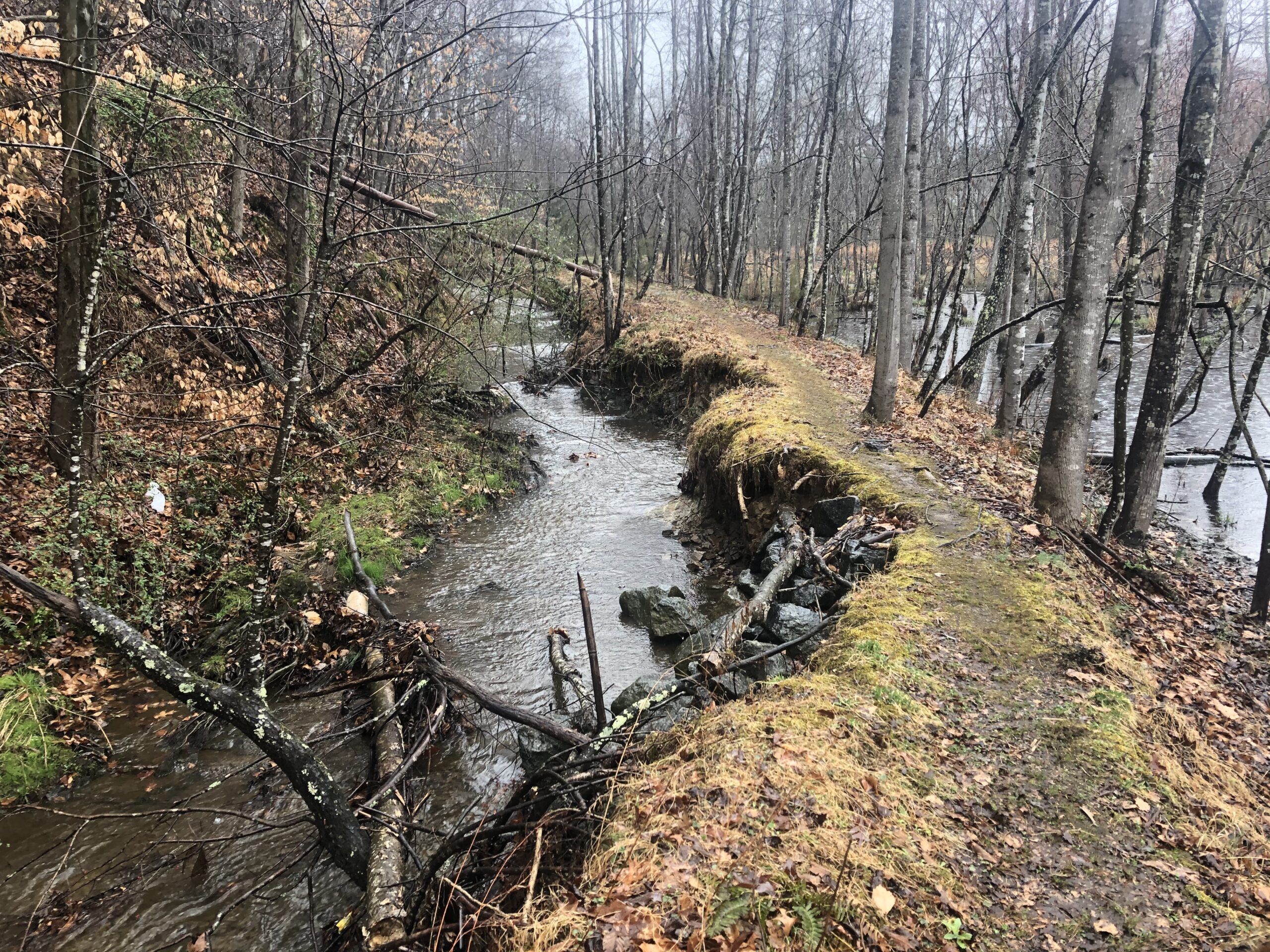Events
Streambank Stabilization Project Field Visit June 18
Join partners of the Upper & Middle James Riparian Consortium, and Kip Mumaw of Ecosystem Services, to visit 2 completed Streambank Stabilization project sites in Northern Albemarle County on June 18 (rain date July 16). RSVP by June 16. You are welcome to join for just one of the sites or both. Read more about the sites below! If you have any questions, please contact Amber at aellis@thejamesriver.org
10-11:30am: Visit Site #1 — Woodbrook Lagoon
Park on street and walk to site entrance. Space is limited, so carpooling is recommended. Intersection of Brookmere Road and Idlewood Drive.
Woodbrook Lagoon is a historic wastewater lagoon that was converted into a stormwater facility in 2011. The stream that flows adjacent to the facility has since degraded vertically to bedrock and lateral erosion was destabilizing a trail and threatened to impact the wetlands in addition to impacting downstream water quality. The stabilization project includes streambank grading to allow storm flow to access a bench or spill over into the wetland instead of being contained within the channel. The inlet to the stormwater facility was also modified to allow storm flow to access the wetland cells, thus relieving some of the frequent erosive flows from the channel.

Woodbrook Lagoon Before

Woodbrook Lagoon After
Travel to Site #2 (5-10 min drive)
12:00-12:30pm: Lunch at Site #2 — Chapel Hills Stream Restoration: Bring a brown bag lunch and something to sit on. Meet in back parking lot here at the Church of the Incarnation – 1465 Incarnation Dr, Charlottesville, VA 22901
12:30-2:00pm: Visit Site #2 — Chapel Hills Stream Restoration
Meet in back parking lot here at the Church of the Incarnation – 1465 Incarnation Dr, Charlottesville, VA 22901
The Chapel Hills project is a restoration of approximately 1,280 linear feet of a perennial tributary to Meadow Creek and the Rivanna River in Albemarle County. For this project (completed in spring 2019) significant volumes of fill were placed into the incised channel so that the restored channel could access the existing floodplain. Other restoration activities involved installation of riffle and pool sequences to improve aquatic habitat; installation rock sills/vanes, wood sills/vanes, root wad structures, and toe wood structures to ensure channel stability; and planting of native vegetation. In the first two or three growing seasons, only a small percentage of the native seed mix and livestakes planted at the site took hold (perhaps due to shady conditions, poor soil, deer browse, and/or lack of stream flow), while Japanese stiltgrass and other non-native plants invaded the site. To address this situation, the County hired Wild Ginger Field Services to plant another round of site-appropriate natives while working throughout the 2022 growing season to manage invasives. In March 2022, they planted approximately 1000 plugs and 1500 live stakes/whips, which we will take a look at during this field visit.
1:30-2:00pm: Debrief and time for Q&A

Chapel Hills Before

Chapel Hills After
This material is based on work supported by the U.S. Environmental Protection Agency (Assistance Agreement No. CB96358201) and the National Fish and Wildlife Foundation’s Chesapeake Bay Stewardship Fund, which promotes community-based efforts to develop conservation strategies to protect and restore the diverse natural resources of the Chesapeake Bay. The views and conclusions contained in this document are those of the authors and should not be interpreted as representing the opinions or policies of the U.S. Government or the National Fish and Wildlife Foundation and its funding sources. Mention of trade names or commercial products does not constitute their endorsement by the U.S. Government, or the National Fish and Wildlife Foundation or its funding sources.
